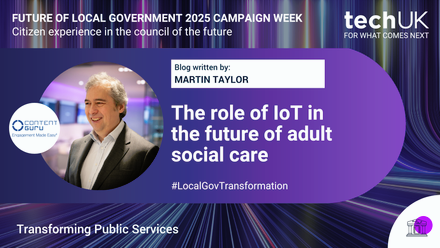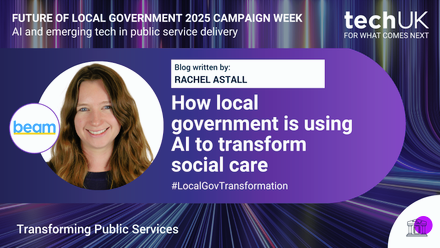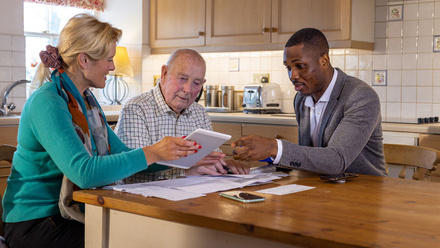Rethinking digital health: the need for a dual economy
Executive summary
- The NHS 10 Year Plan rightly prioritises the shift from analogue to digital, but the current point-solution model is unaffordable, unsustainable, and unscalable.
- Just as the British National Formulary balances blockbuster medicines with cost-effective alternatives (‘generics’), digital health needs a formulary of reusable, low-cost tools alongside commercial products - ‘foundational apps’
- Scaling digital health one app at a time has created short-lived pilots, high costs, and an ‘IP graveyard’ of untapped innovation within the NHS and universities.
- A new model is needed: Publisher → Innovation Hub/No-Code Manufacturing → Distribution Marketplace → Common Infrastructure.
- This approach offers exceptional value for money, enables frontline innovators to create tools that meet real needs, and builds a sustainable digital backbone for the NHS.
Digital health represents the single most important multi-generational shift in healthcare. But the promise of digital health has not been realised, because we are trying to refine a model that is hard to scale.
It is estimated that in the UK alone, there has been over £2.8Bn invested in digital health, with few, if any, success stories, and not a single patient-facing technology scaled and procured nationally in the NHS in England, with far too many stuck in endless pilots.
So why has it failed? I believe the model we have taken of trying to scale individual point solutions is fundamentally flawed.
Let’s take the analogy of medicines. The British National Formulary (BNF) has 1,500+ drugs, 80-85% of which are generic products, but they only account for 25% of the spend. The vast majority of the NHS budget for medicines is spent on patented, IP-locked ‘blockbuster’ drugs. But without the foundation of generic medicines, the whole system fails.
With digital health we are attempting to scale an entire economy of solely commercial ‘blockbuster’ products. Typically, these are high-cost, high-risk, high-impact solutions that would cost millions of pounds - if not tens of millions - per product to deliver nationally. This is understandable as they are rightly needing to recoup their R&D costs of bringing them to market - in the same way as pharmaceutical products do.
But how is that scalable if we actually need hundreds, if not thousands, of patient-facing tools - many of which need to be localised. The current approach simply cannot deliver that.
Unlike medicines, there are no low-cost, low-risk, high-impact solutions to buffer the blockbusters. This means that everyone is fighting for a finite budget and the system struggles to know which to back or how to do it, setting up processes ansd barriers to 'help'.
Yet many digital approaches could be seen to be commoditised, the R&D cycle complete, for example, prevention, cognitive behavioural therapy and rehabilitation. Yes, there are unique solutions delivering incredible outcomes and impact, but equally there are tools and techniques that can be applied to the masses.
If we are to truly scale patient-facing digital health, we need a BNF equivalent of a formulary - with a backbone of low-cost, widely reusable digital alternatives - ‘foundational apps’ - which props up the blockbusters. A dual economy. One supporting the other.
It is not just the financial reasons that the model is wrong.
Even beyond the financial argument, the blockbuster economy approach to digital health does not support a seismic shift from analogue to digital, for the following reasons:
- Health systems do not have the resources or processes to identify, assess, procure, distribute and implement hundreds/thousands of point solutions targeting individual conditions or populations, we can only do them one-by-one, we can see that with the slow pace of adoption and endless pilots;
- Current mass-market products are built for all and resonate with few, missing underserved patients. Most commercial solutions only address populations with good return on investment, but fail to meet local demands and pathways - built for global scale they often miss the nuance. Whereas, clinical innovators, researchers and healthcare organisations with frontline or lived experience know how to solve their local challenges through digital, but are unable to create the solutions that they know will fix their problems. Instead, they are told what commercial products to use, regardless of whether they fit within their pathways or meet the needs of the local population;
- There is a disconnect between research and practice - researchers and universities investigating new approaches and digital tools don't have the mechanisms in place to scale solutions and translate from grant-driven research to viable and deployed products, there is a growing “IP-graveyard” of solutions that could be unlocked and scaled;
- The only model for growth is a commercial ‘for-profit’ model, whereas many clinical innovators and researchers who have created great ideas and solutions, don’t want to leave their profession, set-up a business and go around selling Trust to Trust. They want to have impact in their current roles, serving the people they went into the profession for, and don’t want to leave the career they love to become a business owner, just so that their solution is used.
In a recent panel, I was asked to name a successful patient-facing app that had scaled nationally (anywhere in the world). I couldn't name one - not one that was procured nationally, deployed, adopted and was a sustainable and a profitable business. Not one. Can you?
Shifting the paradigm
Due to the above, the current approach to patient-facing digital health is failing because it is not affordable, sustainable or scalable and excludes the subject matter experts with lived, frontline or research experience.
So how do we create an economy of low-cost foundational apps to augment and support the blockbuster economy? How do we create a dual economy?
Well… for centuries, there has been a successful model for sharing and scaling expertise that helps to educate, treat and drive behaviour change. Look at your bookshelf or coffee table.
An author - a subject matter expert - shares their knowledge and expertise through writing a book. After they have finished writing their book, they don’t then buy a printing press, manufacture their book, go book shop to book shop selling it, become a salesperson, marketeer, PR agent and distributor.
No, an author finds a publisher and distributor and collects a royalty.
But we’re expecting clinical innovators, researchers and other subject matter experts to create a digital solution in an area that they deeply care about, find hundreds of thousands of pounds to build it through expensive software developer teams, then leave the profession they love so dearly that they spent the time addressing some of its challenges, to then become a CEO, salesperson, marketeer and tech expert etc.
I know this, because it’s what I did nearly twenty years ago when myself and another clinical psychologist created one of the first digital therapeutics for addictions, Breaking Free Online. I haven't practiced clinical psychology since.
So, if we’re going to create a marketplace of foundational apps then we need to apply a similar model to the publisher-distributor approach:
- Support subject matter experts to share their knowledge by providing the tools that empower them to create their own digital solutions. Health-specific no-code, such as Cogniss, has the ability to democratise digital health so that clinicians, innovators, researchers and those with lived or frontline expertise, don’t need technical expertise (like software developers), just domain expertise. Nor do they need hundreds of thousands of pounds, they can bring their idea to life in incredibly cost-effectives ways. This means they don't need to recoup the R&D costs, they can pass on the savings.
- Identify the need - create a publisher that can assess where the need is most, from underserved/forgotten populations to narrowing the digital divide and meet the user where they are. We need an approach where we proactively engage with healthcare experts, researchers and academics to unlock the IP within the NHS and release the “IP graveyard” within universities. A publisher that can find and commission apps from these subject matter experts and help get them NHS-ready.
- Create a national innovation hub and remove the technical barriers - establish a ‘manufacturing’ capability through the implementation of a specialist no-code platform. A key barrier in the digital health market is that it costs too much, takes too long and needs highly skilled software development teams to create the technologies needed. Due to these barriers, individuals and health systems with frontline and lived-experience have been prevented from being able to create the tools they know will have the highest impact by reaching the people that need them most - from simple support tools for information and prevention to complex multi-pathway digital therapeutics. A specialist no-code solution, built for digital health, unlocks this potential. The ability to build products in days and weeks, by subject matter experts, without the need for specialised training or software developers, now makes this possible. It is happening already, across the UK, but we need to bring that together in a national approach - a single digital health innovation sandbox.
- Get the right digital health apps into the right hands at the right time - creating a distribution channel. On the demand-side, it is difficult for health systems to know where to look for digital health apps in each area of need - there are either too many, not enough, or no solutions at all. On the supply-side, building an app and getting it to buyers and end users is a huge barrier to growth, and too many businesses fail before they get traction. There are also innovators and researchers who don’t want to become business owners, selling ‘door-to-door’, and simply want their app to be used. A unified procurement channel and marketplace is needed, with foundational apps. This approach offers exceptional value for money and a truly scalable model, but not if they are all individual point solutions built on different, unique tech stacks.
- Have a sustainable and scalable approach - a common infrastructure. The reality is, no health system can keep repeating the same process thousands of times over technology assessments, procurement, hosting, integrations, data sharing models and compliance checks. Yet, we’re trying to put those systems and processes in place. But doing all of this across different tech stacks is not just slow, it’s unworkable. That’s why digital health gets stuck in pilots and never scales.
What we need is a once-for-all approach: common hosting, common integrations, common security, common compliance, common standards. Do it once for every single foundational app. Without this, the formulary idea collapses, because the cost and friction of deploying even the “low-cost” tools becomes overwhelming.
This is where no-code comes in. Not just for building apps quickly, but for delivering a shared infrastructure that is safe, compliant and repeatable. A national cloud, a single technology stack, with privacy and security built in from the start. It’s the equivalent of the BNF for digital health — the backbone that lets both blockbusters and foundational apps co-exist and thrive.
Is this approach feasible and actionable?
The good news is that a lot of the systems and infrastructure needed already exists. From the Health Innovation Network that can signal demand and help scale, to the NHS Clinical Entrepreneur Programme that supports clinical innovators, to the Health Data Research Centres that bridge academia, data and the health system. The infrastructure exists to support subject matter experts to create this using no-code, such as Cogniss, with regional innovation sandboxes already existing in multiple parts of the UK, in both the health system and universities. With subject matter experts inspired through hackathons and other events.
The distributor is being created now, with the new NHS App HealthStore and new procurement mechanisms coming into place.
We just need to scale this up and shift slightly to accommodate this approach to create the ability to compensate the subject matter experts in a royalty-type approach.
Summary
In summary, for digital health to succeed, we need a foundational layer of low-cost, reusable apps curated within a digital health formulary, leveraging the NHS and researchers as a global IP asset. This can be achieved through a publisher, manufacturer and distributor model, where the technical and infrastructure barriers are removed through a no-code solution. There are signs for hope, for getting the digital health model right and the NHS app HealthStore could be the catalyst to this change.
Health and Social Care Programme activities
techUK is helping its members navigate the complex space of digital health in the UK to ensure our NHS and social care sector is prepared for the challenges of the future. We help validate new ideas and build impactful strategies, ultimately ensuring that members are market-ready. Visit the programme page here.
Upcoming events
Latest news and insights
Learn more and get involved
Health and Social Care updates
Sign-up to get the latest updates and opportunities from our Health and Social Care programme.








